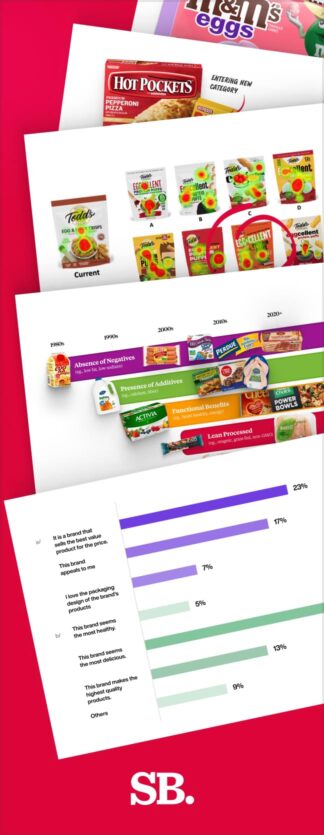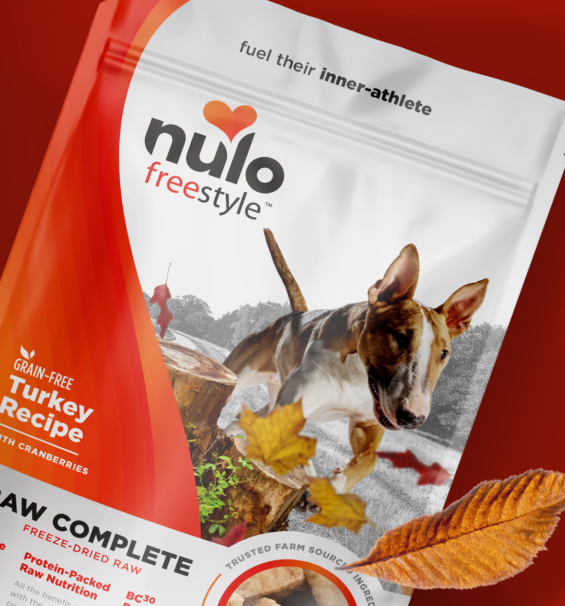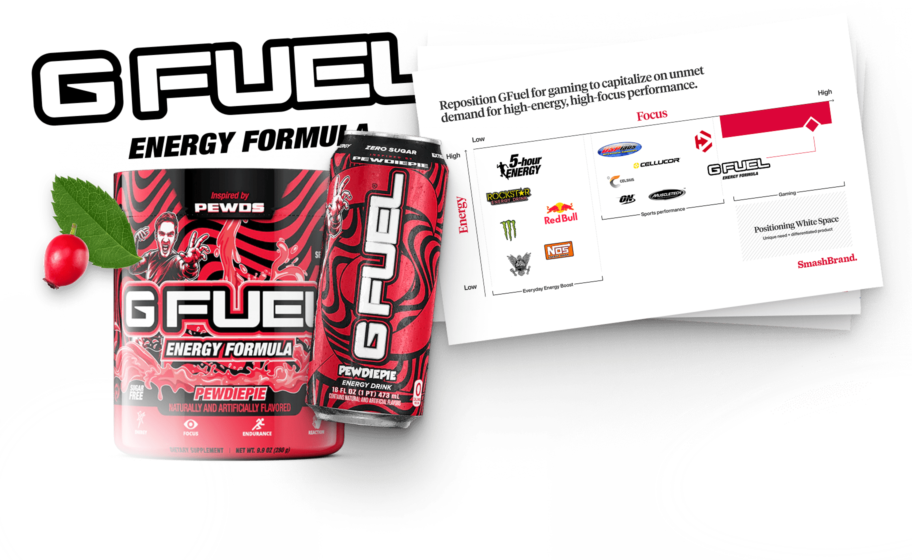You’re already losing share if your in-store messaging doesn’t stop a shopper cold. While brands chase text messaging strategies and obsess over marketing workflows, most ignore the only message inches from the buy button. Top brands don’t just have prettier packaging. They say the right thing at the right moment. That’s the difference.
Most CPG brands miss this entirely. They clutter the front panel and write like they’re still pitching investors. Meanwhile, innovative brands treat in-store messaging as performance media, not packaging fluff. While everyone else focuses on digital signage or retail media hacks, they own the last second of the sale.
This article breaks down how they do it. You’ll see what real shopper communication looks like at the shelf. You’ll get inside the structure of messaging that drives trial, boosts velocity, and pays off. And if you’re serious about in-store marketing, you’ll walk away with a plan that works.
What is in-store Messaging?
In-store messaging is not just a catchy phrase slapped on packaging. It’s the real-time language your brand uses to win the moment inside the store where the customer stands, scans, and decides. It’s what drives trial when no one’s around to explain your value. It’s the difference between getting noticed and getting passed by.
In-store messaging is a core part of shopper communication. It’s built to convert, not entertain. You don’t get the luxury of attention spans here. You get a glance, and the product stays on the shelf (until delisting occurs) if the message doesn’t click.
Innovative brands treat messaging like a lever for in-store marketing, not an afterthought. They align it with digital signage, customer engagement goals, and the bigger engine of customer loyalty. You get consistency when messaging inside the store reflects what’s promised across marketing channels, including social and SMS. Consistency drives confidence; confidence drives conversion. That’s the game.
The science of in-store messaging that converts.
Consumers don’t browse like they scroll. They move fast, they process faster, and they rarely stop to decode your packaging. Inside a retail store, you’ve got seconds. If your messaging doesn’t land in that window, it’s over.
The goal is not to load the box with adjectives but to build clarity into the visual structure. What gets seen first should convince a shopper to grab, flip, or drop it in the cart. That moment either drives retail sales or costs the customer.
Here’s what high-converting in-store messaging looks like:
One bold benefit-led headline
Not a tagline. Not your brand’s origin story. A clear, outcome-focused statement that answers the shopper’s unspoken question: “What’s in it for me?” This line doesn’t compete with email marketing or social content; it leads in real space, under real pressure.
RTBs that support, not crowd
Reasons to believe aren’t decorative claims. They’re short, purposeful proof points that build trust with potential customers when they decide to buy. When done right, they don’t just support your main message; they reinforce it, sharpen it, and give it the credibility needed to trigger action.
But most brands overdo it. They try to list every feature, every certification, every emotional hook. The result? A crowded panel that feels more like a scripted hold message than an innovative, focused value proposition. That kind of messaging doesn’t build trust. It builds confusion.
RTBs should feel like a natural part of the shopping experience, not a pitch. Think of a simple callout like “Clinically Tested,” “Made from 100% Recycled Materials,” or “80% of Loyal Customers Buy Again.” Each one speaks quickly and with purpose. You’re not listing everything. You’re choosing the one or two facts that matter most to your buyer.
And here’s the key: they must be grounded in truth. Customer feedback, product testing, and repeat purchase data are the raw materials of a strong RTB. They give potential customers something to hold onto, something to believe. Combined with a focused message, they give your product an edge over competitors shouting into the void.
That’s also why RTBs should align with how your audience interacts with the rest of your brand. If you’re investing in texting strategies or audio advertising, your packaging should reinforce the same value cues your customers hear and read elsewhere. This consistency not only boosts brand awareness, it makes your message stick.
Icons and claims that act like stop signs
Symbols break scanning patterns. Credible icons like certifications or benefits catch the eye faster than sentences. Think of them as the text marketing of the retail shelf. They interrupt, inform, and simplify. And when done right, they enhance the customer experience.
This isn’t about guessing what looks good. It’s about building a message that performs under real conditions. Just as customer service teams monitor tone in text message marketing, you must control every word and visual on that package. Because this is where brand loyalty starts or ends.
How to build in-store messaging that wins at shelf
Good messaging looks sharp, but Great messaging performs. If your in-store voice isn’t driving purchases at the shelf, it’s not strategic; it’s decoration. Here’s how innovative CPG brands build messaging that works from the ground up.
Start with consumer data.
Before the copy, the color, and the tagline, know what your buyer cares about, not in theory but in reality. Use consumer research to uncover proper purchase drivers. Is it convenient? Health benefits? Flavor? Price perception? You can’t outwrite weak insight. Preformance pack word testing gives you that signal, real claims tested with genuine buyers in a retail environment. It tells you what breaks through and what doesn’t. If you skip this step, you’re just guessing. Solid data is the foundation of in-store marketing services that deliver results, not just impressions.
Write less, mean more.
Your front panel isn’t a brochure; it’s a decision trigger. It needs one clear message at the top and one supporting proof point underneath. Use a clear messaging hierarchy: lead with the most impactful benefit, follow with RTBs, and strip the rest. Let the structure guide the shopper’s eye. This is where the Positioning Score Card becomes helpful in validating your claims against buyers’ values and beliefs. Impactful in-store messaging wins, clarity converts, and the rest is noise.
Design with messaging in mind.
Many design teams mistakenly treat copy as content to “fit” into a layout, which is backward. The message is the lead actor, with design supporting the story, not vice versa. Visual hierarchy, typography, spacing, and placement should enhance the message. If your packaging looks great, but the key benefit gets buried, you lose. In-store marketing services that drive conversion view copy and design as an integrated system rather than separate tasks.
Test in shelf-like conditions: If it doesn’t win there, it won’t win at all
A great message in a meeting might collapse in a retail aisle due to too much noise and too little time.
Testing must occur in context. That entails shelf simulation, eye tracking, and competitive set analysis, similar to how we assess digital performance. This is where preformance pack word testing excels: it helps you identify which language resonates in real time. Think of it as performance marketing for packaging; it either works or doesn’t.
Iterate like a startup.
Brand strategy and messaging should evolve as quickly as your consumer does. What worked last quarter may not work next year. You’re not etching your claims in stone. You’re adjusting them like a growth team tunes an offer. Every launch, refresh, and packaging update presents a chance to refine. You can iterate your in-store marketing materials, but not the packaging design. Too much investment goes into a new product, rebrand, or refresh for iterations to occur frequently. You could be testing often to monitor how your messaging is holding up in a new retail climate.
The five most costly in-store messaging mistakes.
Most brands lose on the shelf because their messaging collapses under pressure. It’s confusing, crowded, or entirely out of sync with how shoppers buy. Great social media, sleek marketing campaigns, and clean mobile messaging flows fall apart if the in-store messaging doesn’t work. This is where shoppers decide, and you’re burning money if you are not landing the message here.
Let’s break down five mistakes that drain velocity and crush brand loyalty at the shelf.
Saying too much, saying the wrong thing.
A large percentage of brands think more words mean more value. In reality, it doesn’t because shoppers aren’t reading but filtering. The real value disappears when messaging is overloaded with claims or filled with irrelevant copy. The goal is not to explain everything but to get one thing across fast. Your best message has to hit first. Everything else supports or stays out of the way.
Leading with features instead of benefits.
No one buys your protein bar because the protein source is “cold-pressed.” They buy it because it helps them recover faster. The message here is: features don’t sell; outcomes do. Most messaging defaults to technical details, especially in regulated or science-heavy categories. But shoppers don’t walk in asking for features. They are looking for solutions, so make your messaging about them, not the manufacturing process.
Poor visual hierarchy.
Even a great message won’t land if it’s buried under noise. If everything looks loud, nothing gets heard. Retailers aren’t waiting around for shoppers to decode cluttered packaging. Hierarchy is how you lead the eye. What gets seen first, what gets felt next, and what gets remembered? It’s the silent force behind conversion and the thing most marketing teams forget to test.
Not testing in context.
Sometimes, messaging gets approved in meetings but not in aisles. That’s the problem because consumers don’t read copy decks; they scan shelves. CPG brands must remember that what looks excellent in a mockup can fail hard under fluorescent lighting, surrounded by 40 competitors and a time-crunched decision. Retail SMS or text message marketing gets tested, measured, and optimized. Your shelf messaging deserves the same scrutiny. If it’s not tested in the real world, it’s a guess, and an expensive one.
Inconsistency with brand positioning.
If your brand conveys one message online, another on the shelf, and yet another in a text message, consumers sense a disconnect that quickly erodes trust. Messaging across stores, marketing, and mobile must align. You risk losing customers if your marketing campaign promises premium quality while your in-store voice feels generic. Consistency builds brand loyalty; inconsistency undermines it.
Quick Diagnostic Checklist
- Is your main message clear in under 3 seconds?
- Are you leading with benefits, not features?
- Can a shopper scan your pack and know exactly what it’s for?
- Have you tested your messaging in actual store conditions?
- Does your shelf voice match your digital, mobile, and retail SMS presence?
If you hesitate on any of those, your in-store messaging might cost you more than you think.

Nice Package
Don’t miss out on our monthly newsletter Nice Package!
Each month, we deliver a data-driven newsletter directly to your inbox, unpacking a critical topic in the FMCG & CPG industry.
"*" indicates required fields
Subscribe to
Nice Package.
A monthly newsletter that unpacks a critical topic in the FMCG & CPG industry.
Free Resource.

CPG product repositioning guide.
Explore the five undeniable signs your CPG product needs repositioning along with strategies for leveraging consumer insights for a guaranteed market lift.
Learn More About CPG product repositioning guide.


